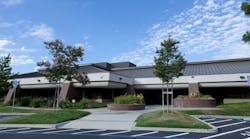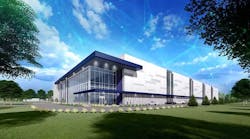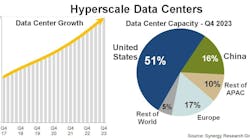The growth of the Internet economy has been a global phenomenon, requiring digital infrastructure across the world. Data center operators have expanded their operations to meet this demand for IT capacity.
“The growth is everywhere,” said Bruno Berti, the Senior Vice President of Product at NTT Global Data Centers Americas (GDCA). “It’s global. We’ve seen a significant increase in our European business. We’re seeing significant demand in the Americas, but also Asia and India. It’s an unprecedented amount of demand.”
Managing data center demand across the globe was a key strategic goal behind the creation of NTT Global Data Centers, which consolidated 28 IT brands owned by NTT Communications, including data center providers RagingWire, e-shelter, Gyron, Netmagic, NTT Nexcenter and Digital Port Asia. The combined company is the third-largest global data center company, trailing only Equinix and Digital Realty, with 6 million square feet of data center space across 20 countries.
DCF editor Rich Miller recently spoke with Berti about NTT’s global data center operations. Here’s the video of our conversation, produced with NTT Global Data Centers Americas:
TRANSCRIPT:
Rich Miller, Data Center Frontier: We’re here talking about the dynamic changes that we’re seeing in the market for data centers and cloud computing, and my guest today is Bruno Berti. The digital economy has really become a global growth story. What does the global nature of the Internet growth, mean to NTT? How do you work with that as a company?
Bruno Berti, Senior Vice President of Product at NTT GDCA: One of the things that we all got caught by surprise was that digital transformation was already happening, but I think the pandemic really accelerated that to a level that none of us expected. One of the first customer types that really saw that were the hyperscale users. They started looking more to colocation providers to really help them with some of this capacity glut, as we call it, that they didn’t anticipate.
And that glut wasn’t just in the Americas, it was global. One of the things that we started seeing was (hyperscale customers) buying larger footprints around the globe, because companies like us that were global in nature had capacity in the markets that they were looking for. Although the hyperscalers recognized it earlier, the enterprise companies are starting to see it now. We don’t anticipate any of this demand slowing down. We actually see this going on globally for probably the next few years at a minimum.
CBJ5 – Cyberjaya 5, NTT’s seven-story data center in Malaysia. (Photo: NTT GDCA)
Rich Miller: Some analysts say that the US has been on the leading edge of internet and global growth. What are the areas where you’ve seen a lot of activity and a lot of interest in data center capacity?
Bruno Berti: The capacity and the growth is everywhere. It’s global. We’ve seen a significant increase in our Europe business. We’re seeing significant demand in the Americas, but also Asia and India. It’s an unprecedented amount of demand that’s being captured in these markets. Once you do business with someone, if you make it easy, if you have a consistency, if you have a mechanism by which you can add on additional services – not only in the Americas, but globally – it really accelerates that demand and actually makes it easier and quicker for companies to do business with us. In the markets where we are building our data centers and we have capacity, we’re seeing that demand being absorbed at a greater clip. So we’re doing more land banking, we’re looking at bigger campuses, and we’re looking at bigger buildings as well to be able to accommodate that hyperscale growth and demand globally, as well as the enterprise demand.
Rich Miller: How does this global growth fit into the way customers are consuming capacity? It seems like the multinational customer demand is really exploding.
Bruno Berti: Most of the customers that we do business with are global in nature and we’re servicing their global needs. But what we’re noticing is some of the companies that aren’t already global are accelerating their demand to reach the global markets. So having that capacity and global footprint has really been a key differentiator. And one thing that is different than some of our competitors is that we started out with four best of breed regional companies that really knew what those markets were. Right? So there was RagingWire in the Americas, we’ve got equivalents in Europe and India in Asia-Pac, and we know those markets very well.
What NTT has done is brought a global nature to those best of breed, regional companies. Unlike some of our competitors that are expanding beyond their regions, we’re already in those regions. So that kind of allows us to act locally and really meet the needs of those regional markets, but then think global and make sure that we’re addressing all of the global needs of those clients as well.
An aerial view of JOH1 in Johannesburg 1, NTT Global Data Centers’ first data center in Africa. (Photo: NTT GDCA)
Rich Miller: You talked about how quickly some of these campuses are filling in some of these fast-growing international markets. What do you see ahead for global growth and how does NTT’s capabilities and resources enable you guys to address some of the demand?
Bruno Berti: We were building 8-megawatt buildings in the past, and then 16-megawatt buildings. Now 36 megawatts is our smallest building. We don’t even talk about buildings anymore, Rich. When we go into a new market, when we’re actually looking at expansion, it always starts with a campus methodology. The other piece, which really is a pretty big differentiator for NTT, is that NTT is really known as a telecommunication network provider. In addition to having those campuses, buildings, and capacity, there’s also the interconnection of all those data centers and being able to provide that interconnection to clients and not have to think about them separately.
Rich Miller: You mentioned the importance of a campus strategy. How does how does that work? I imagine this is multiple buildings. How do you approach that?
Bruno Berti: For folks who may not be familiar with the campus approach, it’s not taking a vault anymore and figuring out where the racks go. It’s really taking that campus and figure out where the build-to-suit should go, where’s the retail, where’s the wholesale, where’s the hyperscale buildings or capacity? It’s kind of made my job a lot more fun and a lot more complex. I’m dealing with 3D and complex Rubik’s cubes as opposed to just the two dimensional ‘where do the racks go’? It’s been a great shift for us, and NTT is really that global player that is allowing us to better facilitate those needs.
The NTT Global Data Centers Navi Mumbai 1 data center supports 30 megawatts of critical IT load. (Photo: NTT GDCA)
Rich Miller: It really does sound like a lot of fun, and a big challenge. There’s so many things going on in the world of technology, and digitalization is bringing lots of new ways of doing just about everything. As the product guy, what do you see on the horizon and how do you think about the kind of products and services you can offer your customers to try and help them serve their global audience?
Bruno Berti: We’re talking about new cooling technologies now – actually talking with clients about putting liquid right to their chips. We never did that before. Now we actually have solutions out there to do that. Sustainability used to just mean being more efficient to save us money. Now we’re really doing sustainability to make a difference and actually provide different solutions. We’re solving those types of needs, and even looking at different power distribution technologies. We were used to deliver 208/120 (for those nerds out there, that’s just standard power). Now our customers want direct 480 feeds, right from our medium-voltage transformer. So it really is changing the game, and the technology is really driving some of these changes that we’re seeing inside the data center.
We actually had one client that didn’t want their equipment in a rack. We had to come up with a shelf-based solution for them because it was denser. But then we had to figure out how to contain that (setup) to make sure that we weren’t mixing the cold air and hot air, and we were able to cool their servers.
This is stuff that we’ve never thought about before, but it really is changing the industry. There is so much going on. It’s a lot of change to try and get your head around.






